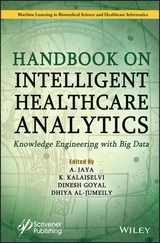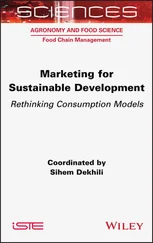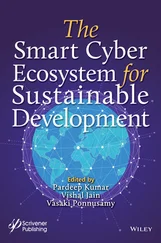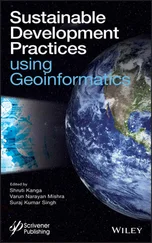11 Part IV SUSTAINABLE COMPUTING 28 Optimal Quantizer and Machine Learning–Based Decision Fusion for Cooperative Spectrum Sensing in IoT Cognitive Radio Network 28.1 Introduction 28.2 System Model and Preliminaries 28.3 Machine Learning Techniques of Decision Fusion 28.4 Optimum Quantization of Decision Statistic and Fusion 28.5 Measurement Setup 28.6 Performance Evaluation 28.7 Conclusion 28.8 Limitations and Scope for Future Work References 29 Green IoT for Smart Agricultural Monitoring: Prediction Intelligence With Machine Learning Algorithms, Analysis of Prototype, and Review of Emerging Technologies 29.1 Introduction 29.2 Green Approaches: Significance and Motivation 29.3 Machine Learning Algorithms for Prediction Intelligence in Smart Irrigation Control 29.4 Green IoT–Based Smart Irrigation Monitoring 29.5 Technology Enablers for GIoT–Based Irrigation Monitoring 29.6 Prototype of the Layered GIoT Framework for Intelligent Irrigation 29.7 Other Recent Developments on GIoT–Based Smart Agriculture 29.8 Literature Review of Edge Computing–Based Irrigation Monitoring 29.9 LPWAN for GIoT–Based Smart Agriculture 29.10 Analysis and Discussion 29.11 Research Gap in GIoT–Based Precision Agriculture 29.12 Analysis of Merits and Shortcomings 29.13 Future Research Scope 29.14 Conclusion References 30 Prominence of Sentiment Analysis in Web-Based Data Using Semi-Supervised Classification 30.1 Introduction 30.2 Related Works 30.3 Proposed Approach 30.4 Experimental Details and Results 30.5 Conclusion References 31 A Three-Phase Fuzzy and A* Approach to Sensor Deployment and Transmission 31.1 Introduction 31.2 Related Work 31.3 Proposed Model 31.4 Complexity Analysis of Algorithms for Data Transmission 31.5 Experimental Analysis 31.6 Motivation and Limitations of Research 31.7 Conclusion 31.8 Future Work References 32 Intelligent Computing for Precision Agriculture 32.1 Introduction 32.2 Technology in Agriculture References 33 Intelligent Computing for Green Sustainability 33.1 Introduction 33.2 Modified DEMATEL 33.3 Weighted Sum Model 33.4 Weighted Product Model 33.5 Weighted Aggregated Sum Product Assessment 33.6 Grey Relational Analysis 33.7 Simple Multi-Attribute Rating Technique 33.8 Criteria Importance Through Inter-Criteria Correlation 33.9 Entropy 33.10 Evaluation Based on Distance From Average Solution 33.11 MOORA 33.12 Interpretive Structural Modeling 33.13 Conclusions 33.14 Limitations of the Study 33.15 Suggestions for Future Research References
12 Part V AI IN HEALTHCARE 34 Bayesian Estimation of Gender Differences in Lipid Profile, Among Patients With Coronary Artery Disease 34.1 Introduction 34.2 Methods 34.3 Statistical Analysis 34.4 Results 34.5 Discussion 34.6 Conclusion Acknowledgements References 35 Reconstruction of Dynamic MRI Using Convolutional LSTM Techniques 35.1 Introduction 35.2 Methodologies 35.3 Problem Formulation 35.4 Network Architecture 35.5 Results 35.6 Discussion 35.7 Conclusion References 36 Gender Classification Using Multispectral Imaging: A Comparative Performance Analysis Between Affine Hull and Wavelet Fusion 36.1 Introduction 36.2 Literature Review 36.3 Multispectral Face Database 36.4 Methodology 36.5 Experiments 36.6 Results and Discussion 36.7 Conclusions Acknowledgments References 37 Polyp Detection Using Deep Neural Networks 37.1 Introduction 37.2 Literature Survey 37.3 Proposed Methodology 37.4 Implementation and Results 37.5 Conclusion and Future Work References 38 Boundary Exon Prediction in Human Sequences Using External Information Sources 38.1 Introduction 38.2 Proposed Exon Prediction Model 38.3 Homology-Based Exon Prediction 38.4 Results and Discussion 38.5 Conclusion 38.6 Motivation and Limitations of the Research 38.7 Major Findings of the Research References 39 Blood Glucose Prediction Using Machine Learning on Jetson Nanoplatform 39.1 Introduction 39.2 Sample Preparation 39.3 Methodology 39.4 Results and Discussion 39.5 Discussion 39.6 Conclusion 39.7 Future Scope Acknowledgement References 40 GIS-Based Geospatial Assessment of Novel Corona Virus (COVID-19) in One of the Promising Industrial States of India—A Case of Gujarat 40.1 Introduction 40.2 The Rationale of the Study 40.3 Materials and Methodology 40.4 GIS and COVID-19 (Corona) Mapping 40.5 Results and Discussion 40.6 Conclusion References 41 Mobile-Based Medical Alert System for COVID-19 Based on ZigBee and WiFi 41.1 Introduction 41.2 Hardware Design of Monitoring System 41.3 Software Design of Monitoring System 41.4 Working of ZigBee Module 41.5 Developed App for the Monitoring of Health 41.6 Google Fusion Table—Online Database 41.7 Application Developed for Health Monitoring System 41.8 Conclusion and Future Work References
13 Index
14 End User License Agreement
1 Cover
2 Table of Contents
3 Title Page
4 Copyright
5 Dedication
6 Foreword
7 Preface
8 Acknowledgments
9 Begin Reading
10 Index
11 End User License Agreement
1 Chapter 1 Figure 1.1 Flow chart of the study. Figure 1.2 Basic neural network. Figure 1.3 Sigmoid function. Figure 1.4 Tanh function. Figure 1.5 ReLU function. Figure 1.6 Basic Bernoulli’s restricted Boltzmann machine. Figure 1.7 Accuracy plot for one hidden layer–based ANN. Figure 1.8 Accuracy plot for two hidden layer–based ANN. Figure 1.9 Accuracy plot for three hidden layer–based ANN. Figure 1.10 Accuracy plot for four hidden layer–based ANN. Figure 1.11 Accuracy vs. hidden layer.
2 Chapter 2 Figure 2.1 Schematic diagram of biological neuron. Figure 2.2 Propagation of signal through neurons. Figure 2.3 Linear threshold function. Figure 2.4 Schematic diagram of linear threshold gate. Figure 2.5 ANN model with continuous characteristics. Figure 2.6 Graphical representation of logistic sigmoid function. Figure 2.7 Single layer neural network. Figure 2.8 Multilayer neural network. Figure 2.9 Formation of axon. (a) Input and output neuron oligonucleotides and t... Figure 2.10 Formation of output molecule using DNA neural network. (a) Axon mole... Figure 2.11 Structure of perceptron [5]. Figure 2.12 Catalytic activity of deoxyribozyme. Figure 2.13 Mechanism to switch on deoxyribozyme logic gate. Figure 2.14 Mechanism of YES gate. Figure 2.15 Mechanism of NOT gate. Figure 2.16 Mechanism of AND gate. Figure 2.17 Structure of ANDANDNOT gate. Figure 2.18 Toehold-mediated DNA branch migration and strand displacement [7]. Figure 2.19 Mechanism of two-input AND gate. Figure 2.20 AND reaction. Figure 2.21 OR reaction. Figure 2.22 PROP reaction.
3 Chapter 3 Figure 3.1 Architecture of proposed framework. Figure 3.2 GMG background subtraction model [18]. Figure 3.3 Keypoints for pose output [10]. Figure 3.4 Samples from the dataset. Figure 3.5 Identification of garment of interest in the presence of a single cus... Figure 3.6 Identification of garments of interest in the presence of a single cu... Figure 3.7 Identification of garments of interest in the presence of multiple cu... Figure 3.8 Variation of average confidence score with respect to changes in conf... Figure 3.9 Average confidence score obtained by garments of interest of particul... Figure 3.10 Total duration of time for which customers were interested in a garm...
4 Chapter 4 Figure 4.1 Complex plane Z(n). Figure 4.2 Adding points ( P = M + N ). Figure 4.3 Doubling a point ( P = M + M ). Figure 4.4 Experiment on encryption. Figure 4.5 Experiment on decryption. Figure 4.6 Visualization of a qubit state.
5 Chapter 5 Figure 5.1 ML application for communications (re-generated from [24]). Figure 5.2 Block diagram for the proposed blind identification method. Figure 5.3 Comparison of overall classification accuracy with benchmark network. Figure 5.4 Confusion matrix CNN with synthetic data set. Figure 5.5 Autoencoder model for CSI feedback. Figure 5.6 Inception block. Figure 5.7 Encoder and decoder blocks of InceptNet. Figure 5.8 Pseudo gray plots of (a) original image (b) image recovered by CsiNet...
Читать дальше












